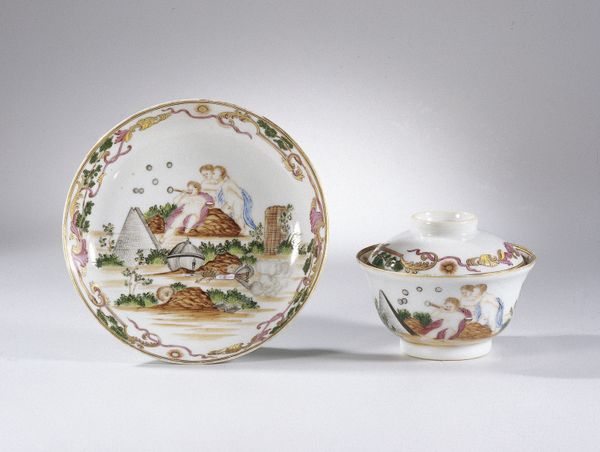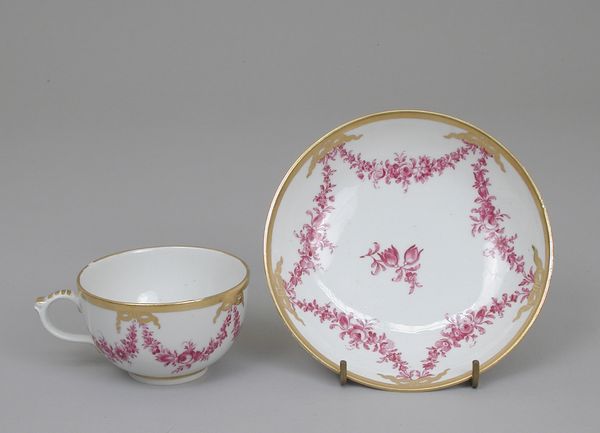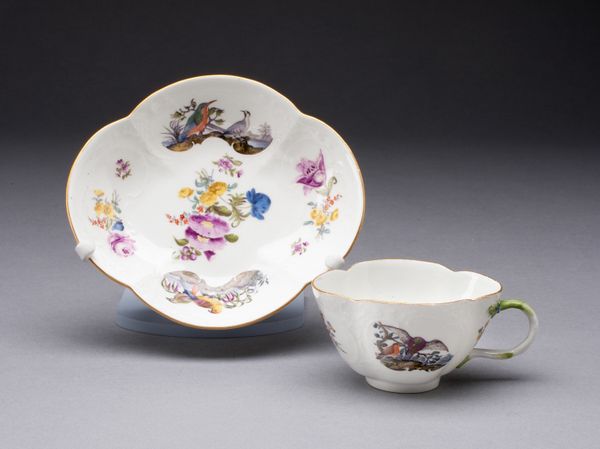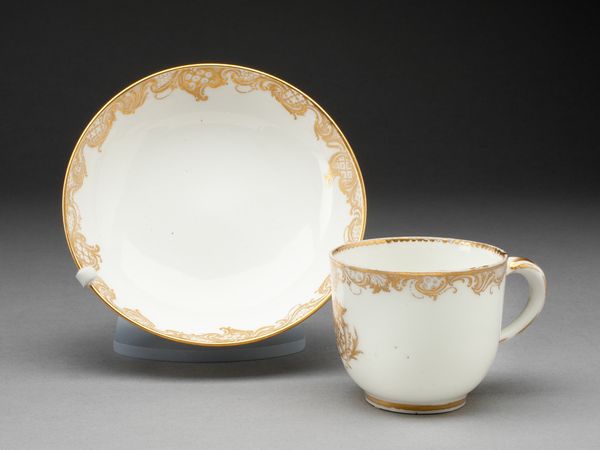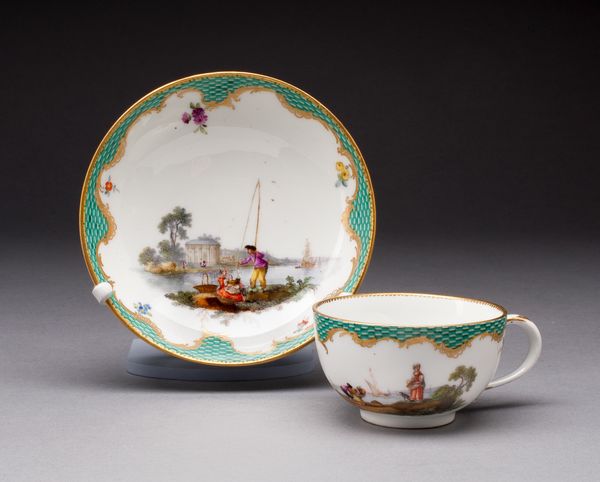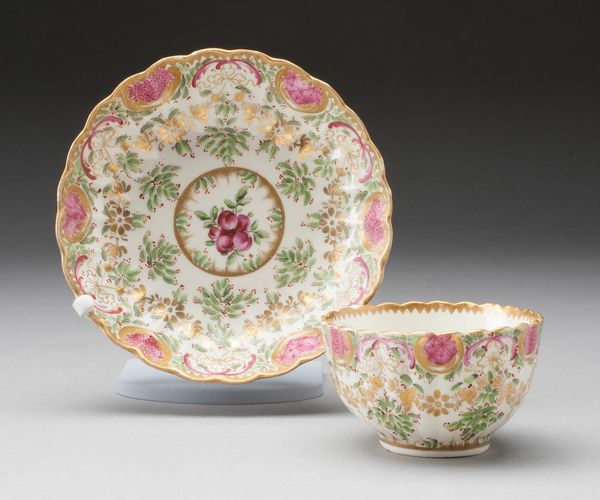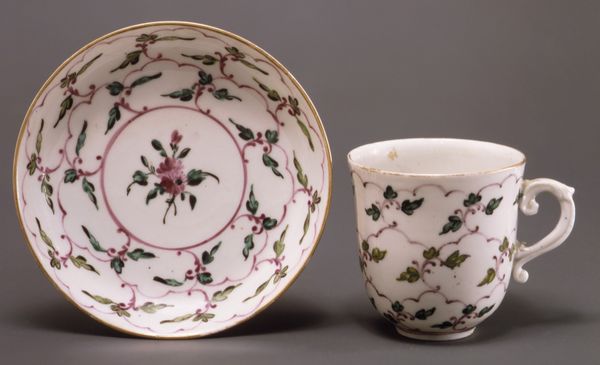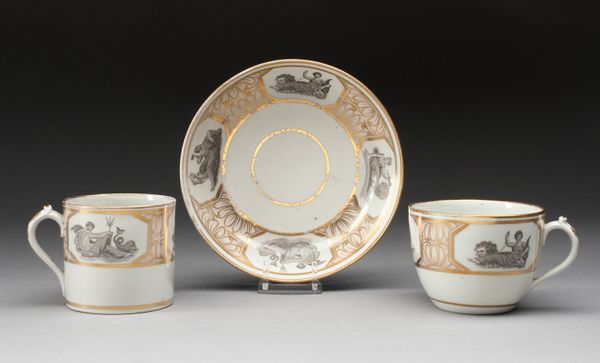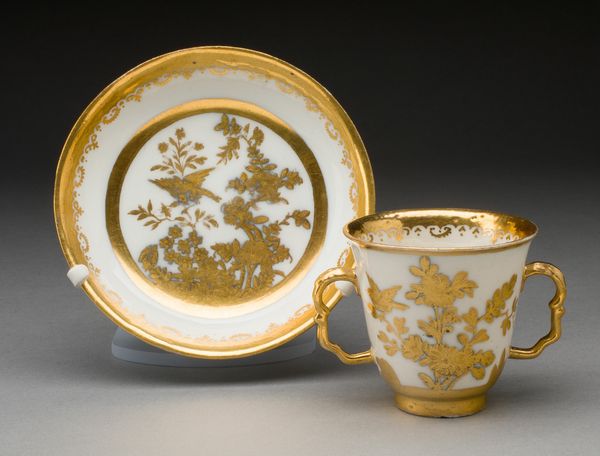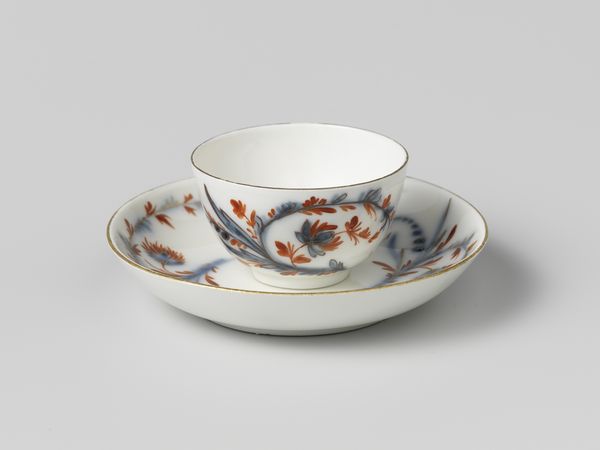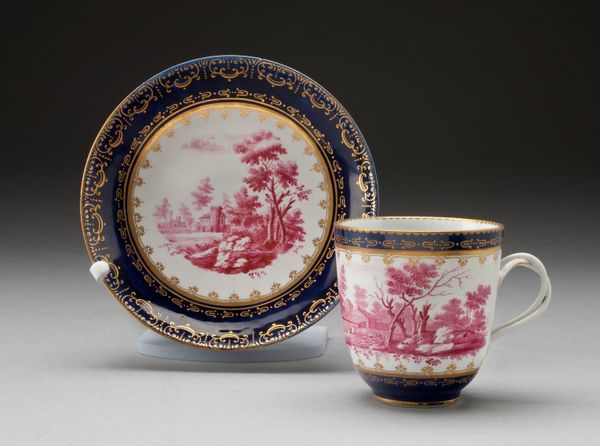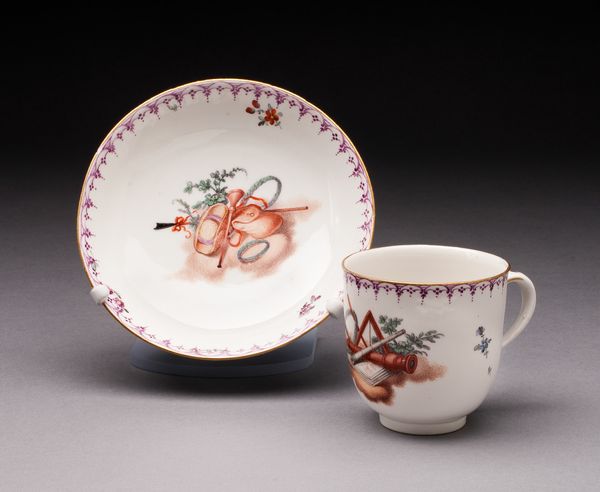
ceramic, porcelain, sculpture
#
ceramic
#
porcelain
#
sculpture
#
ceramic
#
decorative-art
#
rococo
Dimensions: Height (cup .242): 1 3/4 in. (4.4 cm); Diameter (saucer .243): 5 1/2 in. (14 cm)
Copyright: Public Domain
Editor: We're looking at a beautiful "Cup and Saucer," made of porcelain between 1755 and 1775 by the Fürstenberg Porcelain Manufactory. What strikes me is the delicate rendering of the pastoral scene, almost like a miniature painting. What's your take on this piece? Curator: Well, immediately I’m drawn to its embodiment of Rococo aesthetics and what that reveals about 18th-century aristocratic culture. Porcelain itself was a status symbol, but the scene depicted and the delicate, almost whimsical ornamentation speaks volumes about the values upheld by the elite. Notice how the idyllic landscape, framed by elaborate scrollwork, presents a curated view of nature – controlled, beautiful, and utterly divorced from the realities of agrarian life for most of the population. Do you think that this disconnect was deliberate? Editor: That’s a really interesting point, the disconnect. I hadn’t considered it as a political statement. I suppose I just saw the idyllic scene and ornate designs as pretty. Curator: “Pretty” certainly was the point! But who gets to define and consume "prettiness"? The Rococo style, which favored lightness, elegance, and playful themes, thrived in courtly settings like Versailles. Pieces such as these broadcasted wealth and refined taste but they simultaneously cemented social hierarchies. This porcelain isn't just a cup and saucer; it’s a tiny stage upon which the drama of class distinction played out. And the inclusion of what seem to be butterflies and other flying insects seem like nature tamed. Editor: I see what you mean. Knowing its history definitely changes how I view this cup and saucer; it highlights how art is never truly neutral, especially something made for and by a specific class of people. Curator: Precisely! And by understanding its role in shaping social dynamics, we gain a far richer understanding of both the object and the era that created it.
Comments
No comments
Be the first to comment and join the conversation on the ultimate creative platform.
